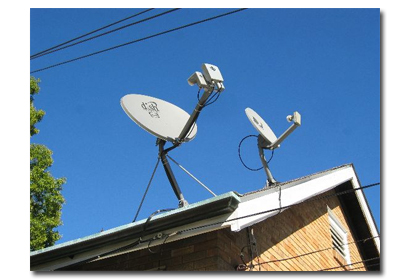|
|
 |
Knowledge Is Key
For Intelligent Decisions
Satellite Logic is a leading,
authoritative source of information in
the Satellite Industry. Located in the
heart of the Silicon Valley, Satellite
Logic provides one of the most
valuable and comprehensive
knowledge bases on the Satellite
market! This is a primary Worldwide
information center which enables our
clients to analyze, evaluate, inquire
and select their best tailored
solutions. Our company sets the
industry standards for targeted
buying leads, reflecting a dramatic
advance over traditional marketing
solutions.
|
|
|
 |

To get good satellite radio reception in your home, you need a
specially designed antenna that works with the satellite radio you
bought. You've got two options: indoor installation or outdoor
installation. Many satellite radios, especially the plug-and-play and
portable radios, come with indoor antennas. But no matter which
kind of antenna you use, you'll need to mount it in a spot that gets
the best reception.
For reaching the strongest signal, take these simple steps:
Place your antenna on the roof. This is the most recommended spot
for home antennas. Since the antennas are weatherproof, it's always
best to place them outside. The clearer the view of the sky, the less
chances to experience signal loss. Placing your antenna on the roof
may require the purchase of an antenna extension cable.
If you can't place it on the roof, place it outside. Sometimes it's easier
to place the satellite radio antenna outside of a window or to mount
it on the side of your house. Either way, you should still try to give
your antenna a clear view of the sky.
The third option for installing your satellite radio antenna is to place
it near a window. In addition to the satellites, satellite providers
make use of terrestrial repeaters in major metropolitan areas to
boost signal. In these areas, it may be possible to receive the signal
with your antenna placed inside your home. The best place would
be near a window. Anyway, wherever you decide to place your
antenna, you should experiment with positioning to achieve the best
signal.

Indoor satellite radio antennas are compact antennas that are
generally mounted in or near a window in your house, preferably
facing south, so that they receive the best possible signal. Satellite
radios usually have antenna aiming features and signal strength
meters, so you'll know when your reception is the bet. Indoor
antennas are convenient, inexpensive, and easy to mount.
Outdoor satellite radio antennas are bigger and more resistant than
the indoor antennas. They are usually mounted on the side of your
house, or the roof (whichever gives you optimum reception).
When buying your new satellite radio, you'll find out that there are
many different satellite radio antenna to choose from. Not long ago
the two main types of antennas on the market were the car satellite
antenna and marine satellite antenna. Today there are many more
options, including in-house and portable radios.
Installing your satellite radio antenna is not a very difficult process.
First, you need to understand that the antenna is a vital element of
your satellite radio setup; without it, you can't receive the signal. The
best place to mount the antenna is on the roof of your vehicle, as far
from obstructions as possible. This will ensure the best possible
signal reception and reduce instances of signal dropout. Most new
satellite radio antennas feature strong magnetic bases which secure
tightly to your vehicle's roof. Some might also incorporate self-
adhesive pads, but these are not as easy to remove and are
generally not used unless the installation is, without a doubt,
permanent.
The biggest challenge is running the antenna cable into the vehicle,
and strategies for doing so vary depending on the type of vehicle in
which you're installing the system. On passenger cars, the most
common strategy is to mount the antenna on the roof, then run the
cable under the weatherstripping around the back window. This
often allows you to run the cable into the trunk without exposing it.
From there, you can run the cable along with the existing wires into
the cab of the vehicle, all the way to the tuner box. You might have
to remove some trim paneling and pull up some of your vehicle's
carpet in order to run the cable unseen to the tuner box.
For pickup trucks, the most popular option is to mount the antenna
on the roof, remove the third brake light (or bed light), route the
antenna cable into the vehicle through this opening, then replace the
light. In a few cases, this might require extensive panel removal in
the truck in order to get the cable to the tuner box, but it provides an
excellent, water-tight option.
SUVs offer the easiest antenna solution. With the tailgate open, the
cable can be run underneath the weather stripping, then under the
carpet all the way to the tuner box.
|
|
|
|
